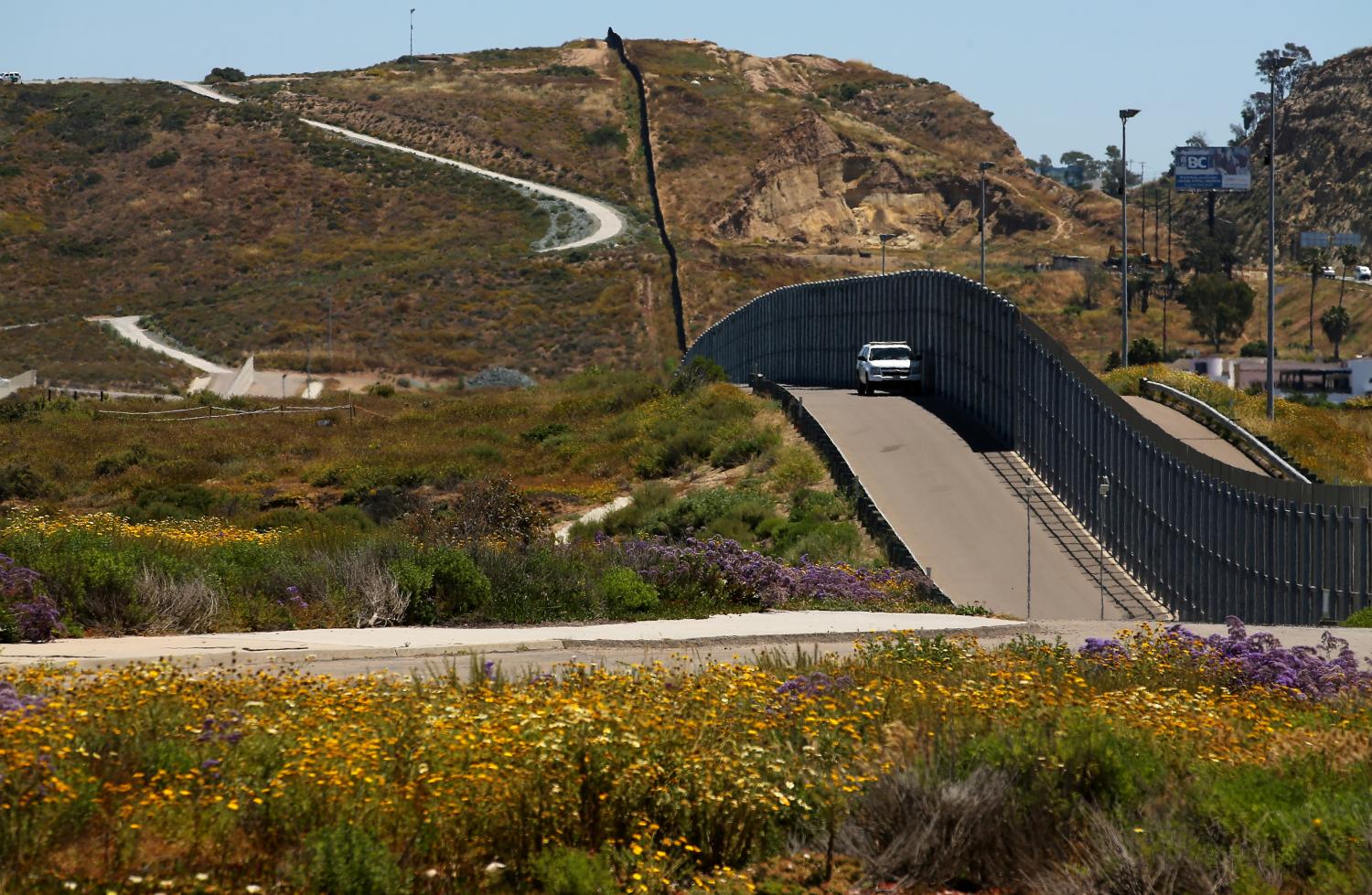Nearly a year into his presidency, all Donald Trump has to show for his campaign pledges to get tough on illegal immigration are: three executive orders that have been overturned by judges; funding proposals for a border wall that have been turned down repeatedly; and the wrath of his former aid Steve Bannon, who fans the flames on the right whenever Donald Trump seems close to compromising on the issue. And the situation is unlikely to improve.
This is the problem with policy that is cut off from reality. Trump rode the immigration issue to the Republican nomination, consistently winning his largest share of the vote among those who thought that immigration was the biggest problem before the country.1 He then rode it to the White House, and now he has to solve a problem that—as we shall see—wasn’t exactly what he told the voters.
In this paper, we cover a series of graphics and data featured in Brookings’s “Immigration by the numbers” project.2 These facts shed light on the immigration trends that predate the Trump campaign, and allow us to examine how much progress the Trump administration has really made on its signature issue.
Unauthorized immigrants and refugees: A clear and present danger?
The first measure in this paper illustrates that Trump’s description of an America overrun by illegal aliens and criminal refugees is bogus. It is the most glaring example of a problem created to stir up political hatred, and the numbers simply do not support it. Bannon’s Breitbart News keeps up the drumbeat of unauthorized immigrants as criminals. A recent front-page headline read: “Illegal Immigrant Accused of Running Over Man in Drunk Hit and Run.”3 During the campaign, Trump himself used families who had been victims of crimes by unauthorized immigrants as props. He repeatedly invoked the name of Kate Steinle, a woman allegedly shot in the back by an illegal immigrant who had previously been deported five times. The suspect maintains it was an accident, and the trial is ongoing. In June, the House passed a bill Trump had repeatedly advocated for called Kate’s Law, in reference to Steinle, which would increase penalties for those who try to re-enter the country after being deported. The Senate has yet to act on it, and attention to it has vanished.
And no wonder. As the following graph shows, the number of immigrants convicted of aggravated felony and removed from the country over a 14-year period from 2002 to 2016 accounts for a mere 7 percent of the total.4 The overwhelming reason for removal among immigrants? Being in violation of immigration laws. These numbers have not changed substantially in years. In FY 2017, only 1.76 percent of immigrants deported were charged with an aggravated felony.

In addition to the exaggerated warnings over supposed immigrant rapists and murderers, Trump sowed fear that Americans were vulnerable to terror attacks from refugees seeking asylum in the United States. Again, there is no evidence for this. The conservative Cato Institute found that over a 40-year period—1975 to 2015—foreign-born terrorists killed 3,423 people in the United States. Most of these were killed in the 9/11 attacks, and those terrorists came to the U.S. as visitors, not refugees.5 Over that same time period, there were more than 750,000 murders in the United States.[6] The report concludes that the risk of being killed by a refugee in a terrorist incident is 1 in 3.6 billion per year.6
Not only is the number of refugees who commit murders small, as the following graph illustrates, the overall number of refugees admitted to the United States has been dropping for some time. It rose dramatically in the late 1970s and early 1980s as the end of the Vietnam War led to large-scale immigration to America. But by the beginning of the 21st century, refugee admissions had dropped to under 50,000 and have remained low to the present day. Again, here is an area where Trump created a problem that did not exist, using it to spread unfounded fear and suspicion. By the fall of 2017, refugee admissions had stopped almost altogether. Then, with great fanfare, the Trump administration announced that it would cap the number of refugees allowed at 45,000, lower than in recent years but higher than the two years at the beginning of the century. Problem created, problem solved.

The open southwest border?
The second allegation that created a quite a stir during the campaign was that the southwest border between the United States and Mexico was wide open, allowing illegal immigrants—especially Mexicans—to pour across the border unchecked. As the following chart illustrates, Mexican immigration to America peaked in 2005, 10 years before the Trump presidential campaign. It has since been nearly outpaced by immigration from Central American countries, as well as India and China. Many of those seeking to enter the U.S. from Central America are fleeing violence—a significant difference from the economically motivated migration from Mexico that used to be the norm.7
The picture painted—an open border where criminal Mexicans and terrorists crossed freely into the United States—was yet another Trump fallacy, designed to create a problem that had already been addressed effectively by the two previous American presidents.
While Trump repeatedly criticized America’s immigration policy for being too lenient, the following chart suggests otherwise. “Removals” refers to illegal immigrants who are forced by the government to return to their home country; “returns” refers to voluntary departures by immigrants apprehended within the border zone. Voluntary returns begin to happen in large numbers in the George W. Bush administration as attempts to cross the border reached their peak; removals increase steadily throughout the Obama administration—to a high of 434,015 in 2013. So much for Obama being “soft” on illegal immigration.

The mostly false specter of criminals sneaking across the southwest border to harm Americans gave rise to one of Trump’s most popular campaign pledges, one that was echoed in nearly every campaign rally: the pledge to build a wall on the border and make Mexico pay for it. However, as the following chart illustrates, during the George W. Bush administration, the amount of fencing on the border increased dramatically as a result of the Secure Fence Act of 2006. As we have written elsewhere with our colleague John Hudak, there are serious problems with building any kind of barriers along the remaining land border.8 But for the purposes of this paper, the record shows that fencing on the land border had been happening for years prior to Trump taking office. It is possible that the leveling off that occurred in the Obama administration had more to do with feasibility and effectiveness than with a desire to have open borders.

In addition to the fencing issue, Trump maintained that the border needed an enormous increase in manpower. This, however, like previous claims, ignored the trends under two previous presidents. Just as President George W. Bush can be credited with a dramatic increase in fencing along the southwest border, President Obama can be credited with a dramatic increase in the size of the border patrol workforce. President Trump wants to hire even more border patrol personnel—a pledge that, like building a wall, faces many practical difficulties.9
Conclusion
There is always a gap between campaign promises and governing realities, but in the case of immigration in the Trump 2016 campaign, the gap is staggering. President Trump created a myth about illegal immigration—a myth designed to create distrust and fear, thus providing easy scapegoats for the many Americans unhappy with their current situation.
Having created the boogeyman of dangerous, out-of-control illegal immigration, the president now has to solve it. On the one hand, the actions of his predecessors—one Republican and one Democrat—will help him. They have tightened borders, increased personnel and contributed (ironically, through NAFTA) to a better Mexican economy. As a result of these factors, unauthorized immigration is down as evidenced by the drop in apprehensions at the border—a drop that began in 2004, not in 2017.

On the other hand, Trump’s solutions—especially the border wall—are likely to face skepticism from lawmakers who know the limitations of physical barriers and the complexity of the problem. In the end, President Trump may find himself having “solved” the problem of illegal immigration without having enacted any of the measures he outlined. The voters will have to decide what to make of it.
Appendices
Appendix A
| Trump’s vote share among voters whose most important issue was… | |||||
| State | Date | Economy/Jobs | Terrorism | Govt. spending | Immigration |
| Iowa | 2/1 | 24% | 21% | 19% | 44% |
| New Hampshire | 2/9 | 32 | 29 | 34 | 53 |
| South Carolina | 2/20 | 36 | 31 | 25 | 51 |
| Nevada | 2/23 | 48 | 36 | 37 | 62 |
| Alabama | 3/1 | 43 | 44 | 36 | 61 |
| Arkansas | 3/1 | 34 | 34 | 28 | 54 |
| Georgia | 3/1 | 39 | 41 | 33 | 57 |
| Massachusetts | 3/1 | 42 | 50 | 33 | 74 |
| Tennessee | 3/1 | 40 | 44 | 33 | 50 |
| Texas | 3/1 | 26 | 34 | 21 | 35 |
| Virginia | 3/1 | 33 | 34 | 32 | 42 |
| Michigan | 3/8 | 38 | 39 | 29 | 62 |
| Mississippi | 3/8 | 48 | 43 | 50 | 56 |
| Florida | 3/15 | 43 | 48 | 40 | 60 |
| Illinois | 3/15 | 37 | 40 | 31 | 69 |
| Missouri | 3/15 | 42 | 39 | 32 | 63 |
| North Carolina | 3/15 | 41 | 35 | 35 | 59 |
| Ohio | 3/15 | 33 | 34 | 32 | 68 |
| Connecticut | 4/26 | 58 | 59 | 46 | 82 |
| Maryland | 4/26 | 54 | 54 | 45 | 73 |
| Pennsylvania | 4/26 | 60 | 53 | 50 | 73 |
| Indiana | 5/3 | 56 | 54 | 43 | 66 |
| Average | 41 | 41 | 35 | 60 | |
|
Note: Exit polls from New York, Oklahoma, Vermont, West Virginia and Wisconsin were excluded from analysis because of insufficient sample size. Other contests did not have entrance or exit polls. Sources: CNN, Edison Research. |
|||||
-
Footnotes
- See Appendix A at the end of this paper.
- Kamarck, E., Hudak, J., & Stenglein, C. Immigration by the Numbers. The Brookings Institution: August 15, 2017.
- Published on Breitbart on October 13, 2017.
- Aggravated felony is a term in immigration law that refers to a broad category of mostly serious offenses that can impact an immigrant’s status in the United States. Top among the list are rape, murder, sexual abuse of a minor, drug trafficking and terrorism—but in recent years the list has been expanded to include less serious crimes.
- Nowrasteh, Alex. Terrorism and Immigration: A Risk Analysis. The Cato Institute: September 13, 2016.
- Nowrasteh, Alex. (See note No. 4)
- Lesser, G. & Batalova, J. Migration Policy Institute. Central American Immigrants in the United States. April 5, 2017.
- Hudak, J., Kamarck, E., & Stenglein, C. Hitting the wall: On immigration, campaign promises clash with policy realities. The Brookings Institution: June 22, 2017.
- Ibid.





